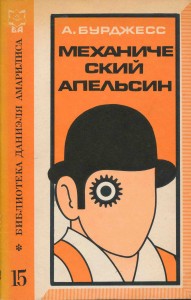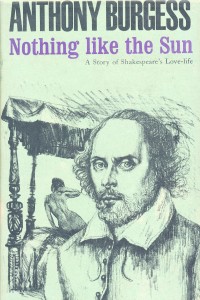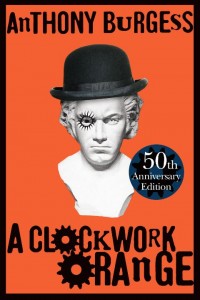A Clockwork Orange
A Clockwork Orange is Anthony Burgess’s most famous novel and its impact on literary, musical and visual culture has been extensive. The novel is concerned with the conflict between the individual and the state, the punishment of young criminals, and the possibility or otherwise of redemption. The linguistic originality of the book, and the moral questions it raises, are as relevant now as they ever were.
- A Clockwork Orange
- A Clockwork Orange on film
- A Clockwork Orange on stage
- The Music of A Clockwork Orange
- A Clockwork Orange and Nadsat
- A Clockwork Orange and the Critics
- The Legacy of A Clockwork Orange
- The Podcast
A Clockwork Orange and Nadsat:

One of the notable innovations in A Clockwork Orange is the language spoken by the droogs. Nadsat, from the Russian word meaning ‘teen’, is the name of the invented slang in which Alex narrates the novel. Anthony Burgess decided to use Russian because he had learned the basics of the language before visiting Leningrad in 1961. It was unusual for a British citizen who was not a communist to travel to Russia during the Cold War, and this is one of the reasons why Burgess is sometimes confused with spies of the period, such as Guy Burgess and Anthony Blunt.
Burgess’s visit was motivated by curiosity about Russian culture and literature, and he originally intended to write a travel book about Soviet Russia. Shortly after returning to England, he produced two novels: A Clockwork Orange and Honey for the Bears. Burgess’s later spy novel Tremor of Intent (1966) contains further material derived from the 1961 visit, and this book also includes dialogue in Russian.
Before he set off for Leningrad, Burgess spent time learning the language, just as he had before going to live in colonial Malaya in the 1950s. His enthusiasm for language-learning (he listed it as one his ‘recreations’ in Who’s Who) can bee seen in many of his publications, from the Basic English of One Hand Clapping (1961) to the Elizabethan richness of Nothing Like the Sun (1964), or the mixture of English, French, Italian and German in Napoleon Symphony (1974) Burgess’s writing always delights in new, archaic and unfamiliar words.

In addition to the Russian influence, Nadsat derives from a number of other sources: Romany; Cockney rhyming slang; the language of the criminal underworld; the English of Shakespeare and the Elizabethans; and Second World War forces slang.
Within this patchwork of languages, Burgess is careful to allow the context of a word to signal its meaning. When Alex talks about his intention to ‘tolchock some old veck in an alley and viddy him swim in his blood,’ the meaning is clear enough. Nadsat is also used as a language of resistance, which establishes the droogs as a counter-cultural group: it allows them to communicate in a way that is clearly demarcated from the standard English of policemen, prison warders, scientists and probation officers.
Like George Orwell with his ‘Newspeak’ in Nineteen-Eighty Four (1949), Burgess aimed to create a new fictional language to depict a dystopian future. One other effect of Nadsat is to remove the action of the novel from any precise geographical location: the city where it is set could be anywhere from Manchester to Leningrad, London to Los Angeles. The decision to blend English and Russian adds an element of ambiguity to the setting, and the book suggests a possible future in which Russian words have been absorbed into English for some political reason which is never stated.

Looking back on A Clockwork Orange in his non-fiction book You’ve Had Your Time (1990), Burgess wrote: ‘The novel was to be an exercise in linguistic programming, with the exoticisms gradually clarified by context: I would resist to the limit any publisher’s demand that a glossary be provided. A glossary would disrupt the programme and nullify the brainwashing’. The book’s editor, James Michie, had some hesitations about the density of Nadsat in the novel and suggested that Burgess should ‘make it gently accelerando.’ He added: ‘You can’t throw too much of it at them too quickly.’ This editorial advice may have led to revisions in the first part of the novel, as we can see when Alex helps the reader through some elements of Nadsat, such as ‘rooker (a hand, that is),’ ‘litso (face, that is)’ and ‘my three droogs, that is Pete, Georgie, and Dim.’
Despite Burgess’s stated wish that a Nadsat glossary should not be included in the book, there have been several editions of the novel which provide a glossary, beginning with the 1963 edition published by Norton in the United States. Glossaries often appear in new translations of the novel, and the current Penguin Classics and Norton Critical editions both include one. Readers differ in their opinions about the value of having a glossary in the book.


